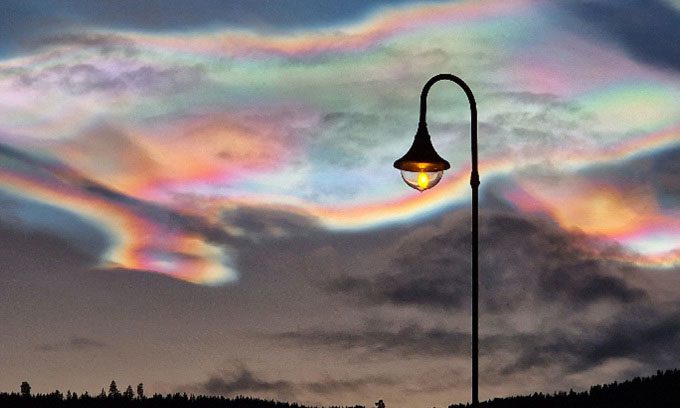Stunning rainbow-colored clouds have appeared around the Arctic for more than three days, thanks to an unusual cold snap in the upper atmosphere.
Mother-of-pearl clouds, which are essentially polar stratospheric clouds, have been spotted at high altitudes around the Arctic, in the skies over Norway, Sweden, Finland, Alaska, and even extending further south to Scotland. They began to make their appearance on December 18 and remained prominent until December 20. A few smaller and less conspicuous clouds appeared on December 21, but overall, they seem to be gradually fading away.

Colorful mother-of-pearl clouds appeared around the Arctic for several consecutive days. (Photo: Ramune Sapailaite)
Photographer Ramune Sapailaite captured impressive images of these rare clouds above Gran in southern Norway. The photographs showcase the iridescent rainbow colors of the clouds. They are called “mother-of-pearl clouds” due to their resemblance to mother-of-pearl, a shimmering material found in the shells of some mollusks. “The clouds were visible in the sky all day, but the colors really burst forth just before sunset,” Sapailaite noted.
Mother-of-pearl clouds form due to prolonged abnormal cold temperatures in the sky. They consist of tiny ice crystals that have the ability to refract or scatter sunlight. This process separates light into individual wavelengths or colors, creating a rainbow-like effect that can be observed from the ground.
There are two types of mother-of-pearl clouds:
- Type I consists of a mixture of ice crystals and nitric acid, producing less impressive colors and is associated with the formation of ozone holes.
- Type II contains pure ice crystals and yields more vibrant colors. The newly formed clouds in the Arctic belong to Type II.
Mother-of-pearl clouds only form in the lower stratosphere, at altitudes of 15 to 25 kilometers above the Earth’s surface. Typically, clouds do not form at such heights in the atmosphere because this area is too dry. However, at extremely low temperatures, below -85 degrees Celsius, water molecules that are sparsely distributed begin to combine into tiny ice crystals, which then develop into clouds.
Stratospheric temperatures in the Arctic rarely drop below the threshold needed for mother-of-pearl clouds to form. As a result, this type of cloud is typically observed only a few times each winter. The recent cold snap that has led to the appearance of mother-of-pearl clouds may partly be due to El Niño, as El Niño affects temperatures around the poles. However, climate change driven by human activities may also be a factor. Experts suggest that more mother-of-pearl clouds are likely to appear around the Arctic in the coming months.


















































